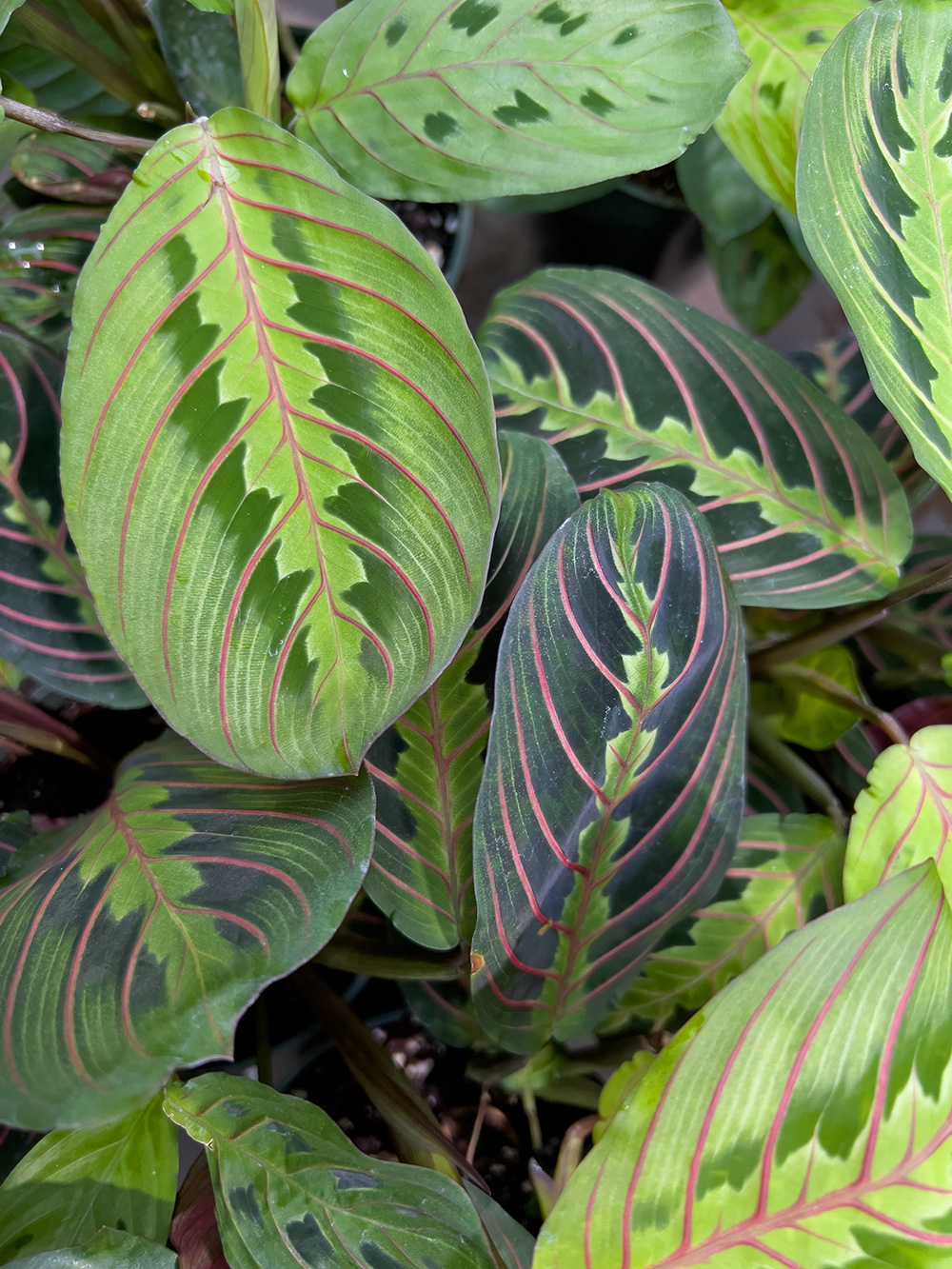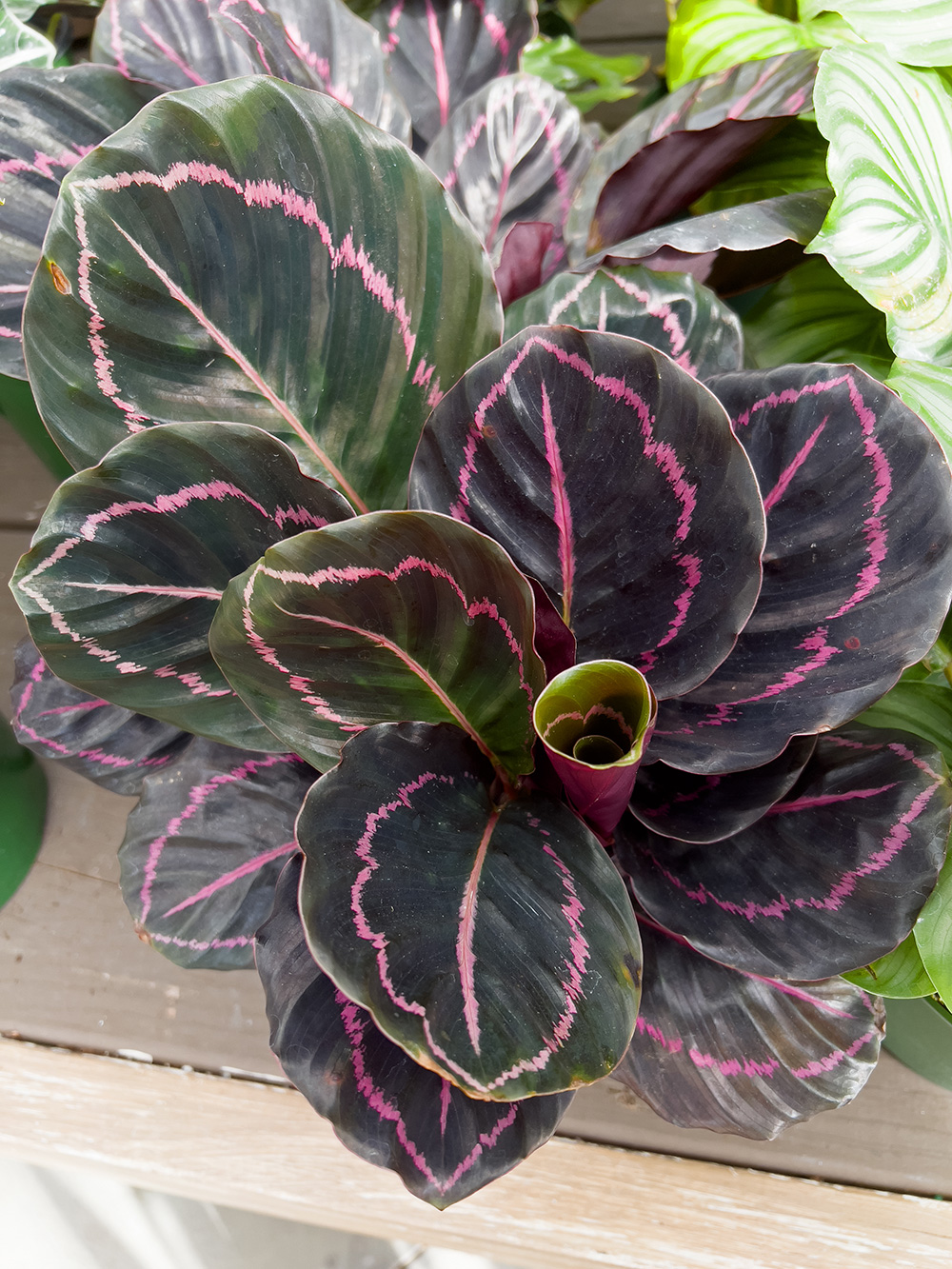As cooling temperatures begin to creep into the garden, backyard growers are turning inward — as in inside — for horticulture pleasures by way of houseplants, but so many can be so-so when it comes to eye-catching looks.
Not so with calathea.
Calathea (Calathea sp.) is also known as the prayer plant, but it has other names too, such as rattlesnake plant, zebra plant, and peacock plant, that are more indicative of its sassy looks.
With leaves varying from rounded to oblong, calathea species and cultivars range the spectrum in hues that include pinks, greens, yellows, and reds appearing as stripes, streaks, swipes, or dots in dizzying arrays of geometric patterns on their busy foliage.
Being from the tropics, calathea does enjoy the cozy confines of a warm house during the winter, where temperatures ranging from the mid-60s to mid-70s will suit this beauty just fine. Because of calathea’s aversion to cold, don’t let its leaves touch windows, as freezing nights can reach through the glass and bite the tender foliage.

The many colors of maranta
Maranta (Maranta sp.) is a close cousin to calathea — it even shares the name “prayer plant” — and can put on a similar fancy foliage flaunt for gardeners stuck inside for the winter. Maranta shows off a wide range of hues and has brightly colored streaks on its veins and midribs that set it apart visually from calathea. It doesn’t grow as tall as calathea, which tops aout around 2 feet, but this is mainly because it tends to flow from a pot rather than stretch for the sky. As far as cultural requirements, maranta’s needs are similar to calathea’s care.
Calathea’s tropical origins also mean it will appreciate humidity, which in a typical indoor home or office environment is not an automatic comfort. Without at least some humidity, the leaves could begin to curl or droop and, if the condition is persistent, even turn brown on the edges.
Setting calathea on a pebble tray filled with water and grouping it closely with other plants will help nudge the humidity level up just a bit. Also, it is a good idea to place it away from the drafts of vents and exterior doors.
The type of water used for irrigating is important because calathea is not a big fan of chlorinated water. Leaving water out overnight before using it will dissipate the chlorine, but filtered or distilled water are also good options.
As far as when to water, wait until the top inch of soil is dry and then irrigate thoroughly. This dry-to-drenched approach works best in quality potting soil blended with a good dose of perlite. Such a mix will retain some moisture, but not to the point of turning the pot into a root-rotting bog. A spot in bright, indirect sunlight will help calathea maintain its vivid foliage. It can take more shade, but leaves will usually have a less colorful snap.
Calathea is fancy plant, but this doesn’t mean it will be hard to find. No, this pretty is common at local garden centers and even the nurseries of most big-box stores.
To Do in the Garden
November
- Don’t think your lawn duties are done just yet. If you grow cool-season grass — meaning fescue, bluegrass, or a combination of both — this month is a good time for another application of lawn fertilizer. Adding these extra nutrients now will help develop strong root systems over the winter.
- Rake up and remove summer mulch, as well as fallen flowers and foliage of roses to help prevent black spot and other soil-borne diseases from overwintering and causing problems next spring. After clearing the debris, apply a fresh covering of mulch.
December
- Whether spray painted or left natural, the dry seed pods of such common garden plants as milkweed, redbud, magnolia, and okra can add an earthy texture to your holiday arrangements and decorations. Ditto for gum balls, acorns, and pine cones.
- If you receive an amaryllis bulb as a Christmas gift, don’t be tempted to give such a large bulb a big pot. Amaryllis performs better in tight spaces, so use a pot that only leaves about an inch of space between the bulb and the container’s edge. Also, position at least a third of the bulb above the soil line.
- Garden Adventurer: Color Your Indoor World with Calathea
- Celebrated Spirits: Naked & Afraid
- Celebrated Spirits: Holiday Bash
- On Trend: Local Holiday Flair
- Small Business Spotlight: Raleigh Cheesy
- Erica Chats: Who Loves a Good Holiday Tradition?
- Pay It Forward: Theatre Raleigh
- Out & About in Wake County: November / December 2022
- Weston Farms
- Oh, Christmas Tree!
- Fountainhead of Flavors
- Indulge … It’s the Holidays!
- Holiday Comfort Food: The Ashley Christensen Way







